10 Popular Dog Breeds That Most People Regret Getting
Huskies are amazing, but they're not for everyone. If you're new to dog ownership, find out why most people regret getting these popular dog breeds.
Getting a dog is exciting, especially for kids. New dog parents, however, are often sent reeling when the realities of ownership hit. Having a dog is like having a permanent toddler, and some breeds are more challenging to train than others.
As a rule of thumb, choosing a dog breed based on looks is a big mistake. The following highly popular breeds are amazing in the right hands, but don’t be fooled by cute Instagram reels: Turning these dogs into well-behaved companions is hard work. If it turns out that your dream breed requires more care than you realized, there’s no shame in choosing a lower-maintenance breed.
Jack Russell Terrier

Getty Images
Most challenging trait: Hyper
Jack Russells are tiny fireballs, and most owners don’t realize quite what they’re getting themselves into when they sign up. Jack Russells are intelligent, curious class clowns, but they’re also energetic to an extreme. If their energy and high prey drive aren’t channeled into exercise, training and playtime, they will bark, dig and destroy all the things you hold dear. They’re also prone to being nippy and aggressive if they’re not socialized continually.
Dachshund
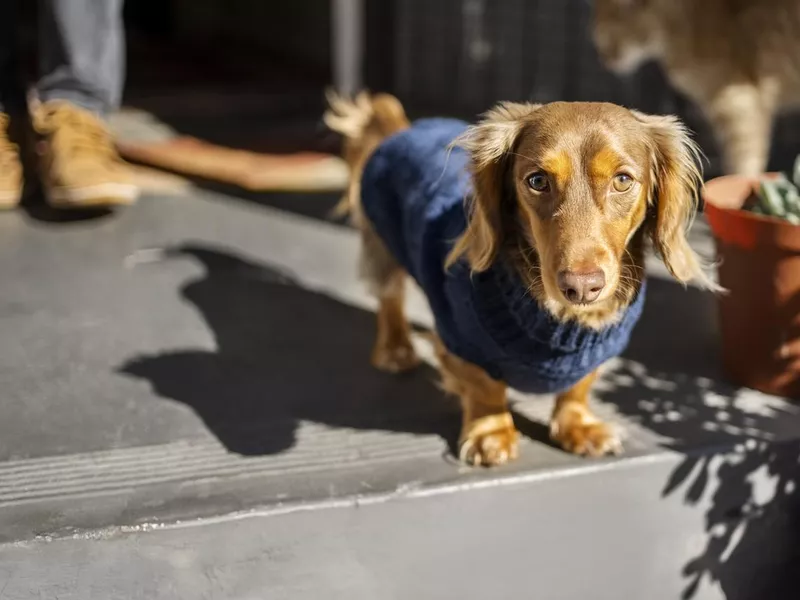
Getty Images
Most challenging trait: Intense prey drive
Dachshunds are beloved in the dog community, but they’re not for everyone. Just because mini dachshunds are small doesn’t mean they’re low-maintenance. They’re mischievous and persistent and were bred to hunt small game. They need plenty of exercise just like larger breeds before they’ll be ready to snuggle up under a blanket next to you.
They can be great with kids, but caution should be taken during playtime. Their long shape makes them more likely to injure their backs and expensive back surgery is common as they get older. Invest in a set of carpeted dog steps to help them get on the couch or bed to help stave off future back issues.
Samoyed

Most challenging trait: Willful
Samoyeds are the friendliest, most loving dogs imaginable, but lovability doesn’t always equate to being low-maintenance. Like all northern breeds, Samoyeds were bred to work. They’re strong, exuberant and thrive when they’re treated as part of the family.
They’re not built to be left home alone for hours while owners are at work. They’re a vocal breed to begin with, but too much time alone may lead to anxious barking and destructiveness. Sammys also shed like nobody’s business and are poorly suited to hot climates due to their heavy coat. Did we mention how stubborn they are? They have minds of their own and they’ll listen to directions when they feel like it. Training a Samoyed is an adventure, so be prepared for a wild ride before getting one.
Labrador
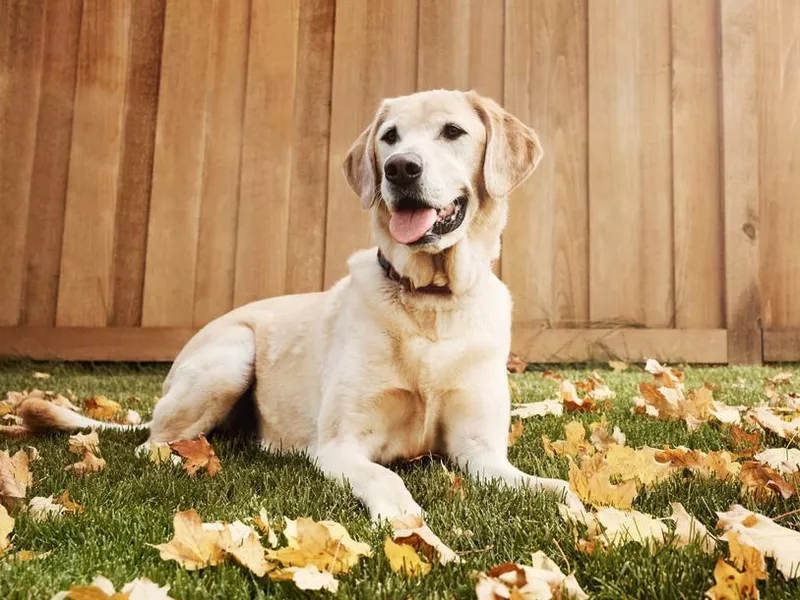
Getty Images
Most challenging trait: Strong and energetic
As far as large dog breeds go, Labradors aren’t very high maintenance at all. The problem is that, as America’s favorite dog breed, they’re often portrayed as the “perfect” dog. Their behavior in commercials is more like an affectionate stuffed animal than an animal. People are taken by surprise when they adopt a Labrador puppy and discover it needs just as much training and attention as any other breed.
Labs are amazing dogs, but they also shed, drool, eat endless kibble and make messes, as dogs do. Labs are also known for a prolonged puppy phase, remaining highly energetic and playful until they’re at least three or four. For families with kids, that can be a plus, but if owners are expecting a mellow canine, a teenage Lab is a rude awakening. They’re prone to pull on leashes and jump up when they’re excited — and all of that requires time and patience to change.
French Bulldog

Getty Images
Most challenging trait: Clingy
French bulldogs, fondly known as Frenchies, are a prime example of velcro dogs. Their velvety coats and smushed faces have won over thousands of hearts, but they’re needier than most owners realize. Frenchies can be extremely clingy. If their mom or dad is out of sight, some Frenchies experience extreme anxiety, barking neurotically until their owner returns. Whether this behavior is endearing or annoying is a matter of preference. They can also be heavy chewers and without a heavy-duty bully ring, they’ll take out their stress on the leg of the kitchen table.
They also love food and are highly stubborn. If you give in to begging once, you’re doomed. Frenchies also need ongoing leash training to keep them from pulling, which is both annoying for owners and a risk factor for future back and neck problems.
Collies

Getty Images
Most challenging trait: Workaholics
The inclusion of border collies on this list should tell you something. Collies, like most dogs on this list, aren’t bad dogs. They can be incredible, loyal companions, but pet parents often don’t realize how much work goes into training a high-energy working dog breed. (Or any breed, for that matter!)
Border collies were bred to herd livestock. They love to please their owners and they love to work. If you don’t give them a task to complete, however, they don’t know what to do with themselves. They need outlets for their herding instincts and energy levels, or they’re likely to chase bikes, cars and pedestrians instead of sheep. Border collies are also very bright, so owners need to make sure they’re exercising the dog’s mind as well as their legs.
Rottweiler

Getty Images
Most challenging trait: Potentially aggressive
When people adopt a small dog with challenging traits, the biggest risk is putting up with a chihuahua with a big attitude. With a large dog, the biggest risk is someone getting severely injured and having the dog facing euthanasia. Rottweilers are not inherently aggressive, but they have intense instincts to guard and protect. They need to be trained with a gentle, authoritative hand from the start.
When Rottweilers grow up, they’re typically large and strong enough to overpower their owners. Because of this, it’s critical to teach them to follow your command early on when it’s still possible to physically control their behavior if necessary. A full-grown Rottweiler who thinks it’s the head of the pack is an accident waiting to happen.
Husky

Getty Images
Most challenging trait: Escape artists
Huskies are extremely popular thanks to their beautiful eyes and comedic personalities. They’re beautiful dogs that eagerly carry on conversations with their human family members. These conversations can be more like arguments, however. They’re strong-willed and are built to pull sleds on frigid Siberian tundras.
Without strong leadership and plenty of opportunities to burn off that energy, they become masterful escape artists. Huskies have been known to learn how to open doors, scale furniture to climb out windows and bolt out any open door. They also prefer cold climates, getting extra needy and destructive when they’re stuck in a warm house all summer.
Shiba Inu

Getty Images
Most challenging trait: Difficult to train
After the doge meme took off, there was a sharp uptick in the number of adopted Shiba Inus – Followed by a rise in Shiba Inus surrendered at shelters. Their moderate size and teddy bear-like faces lead new dog owners to expect a sweet, trainable pet, but Shibes are quite headstrong. They’re one of the most independent of dog breeds. They’ll gladly play with you, but they tend to be more aloof and self-centered than snuggly.
Shiba Inus are loyal dogs, but their high prey instinct and athletic build make them a challenge for new pet owners. They also must be kept on a leash at all times because any training you’ve done goes straight out the window if a Shiba Inu sees a squirrel.
Akita
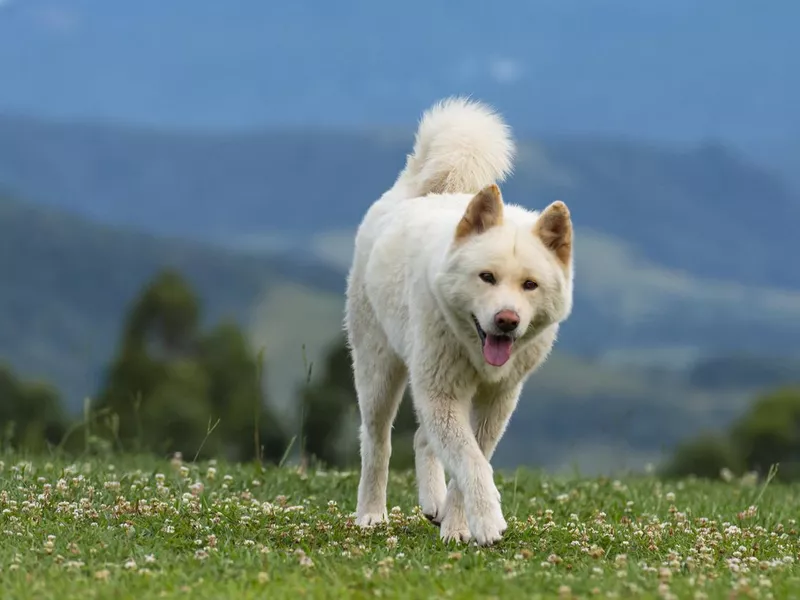
Getty Images
Most challenging trait: Potentially aggressive
Akitas are like they giant version of the Shiba Inu, so if one of those sounds like a headache, don’t even think about getting an Akita. They were bred to hunt large game and, even several generations removed, they’re more interested in working than lounging.
They’re very protective dogs with a natural suspicion of new people and pets. Without the leadership of an experienced dog owner, Akitas can become aggressive with other dogs, impossible to walk and a risk to any visitors walking in the door.
German Shepherd
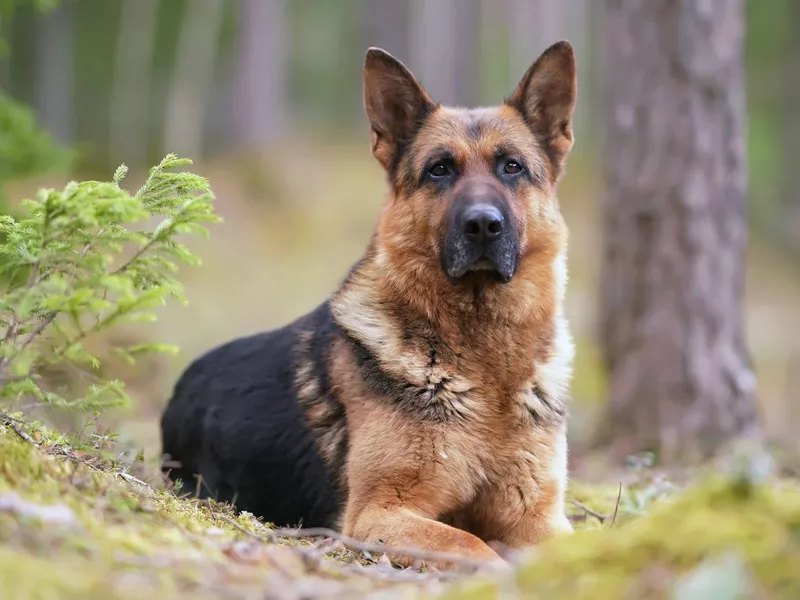
Getty Images
Most challenging trait: Potentially aggressive
German shepherds are often trained as service dogs, police dogs, military dogs or numerous other jobs only a dog can do. They adore training, which is where the challenges arise. German shepherds aren’t meant to be casual playmates and couch potatoes.
They need daily mental and physical stimulation or they become prone to dog aggression, guarding, dominance behaviors and separation anxiety. The breed is also known for several health complications, including arthritis and hip dysplasia that can be expensive, painful and disabling.
Staffordshire Bull Terrier
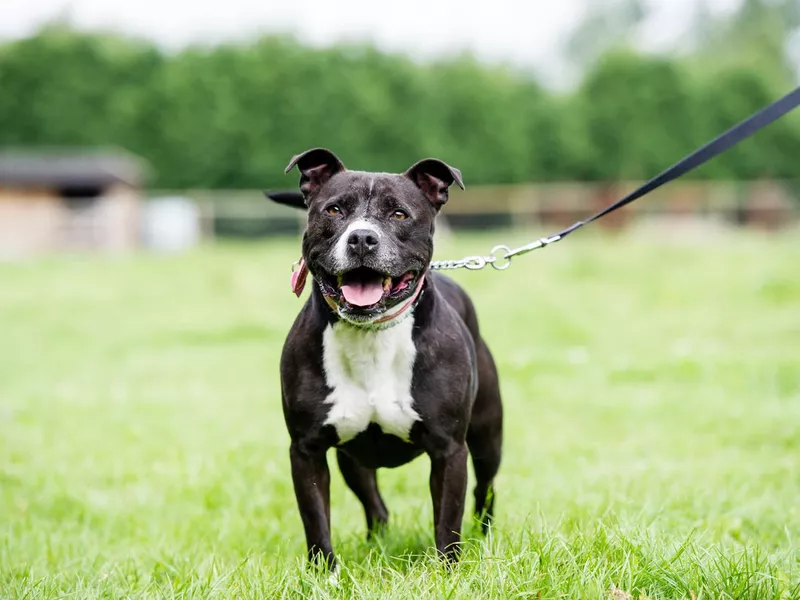
Getty Images
Most challenging trait: Suspicious and demanding
Staffordshire bull terriers can be the best dogs or the worst dogs, and much of that comes down to their owners. They were used in dog fights for so long that they developed a nasty reputation. Most of that is undeserved, but the decision to get a bull terrier still requires research and understanding of the breed’s unique needs.
They’re highly trainable, but bull terriers take practically as much energy to raise as bringing up a toddler. They do have powerful jaws, and they tend to be reluctant to let go once they bite down. Because of that tendency and their muscular build, pit bulls can become dangerous in the hands of an inexperienced owner. This is especially true for owners who want a bull terrier for protection. They are protective, but people should never underestimate how much time and effort goes into training a guard dog safely.
Mastiff
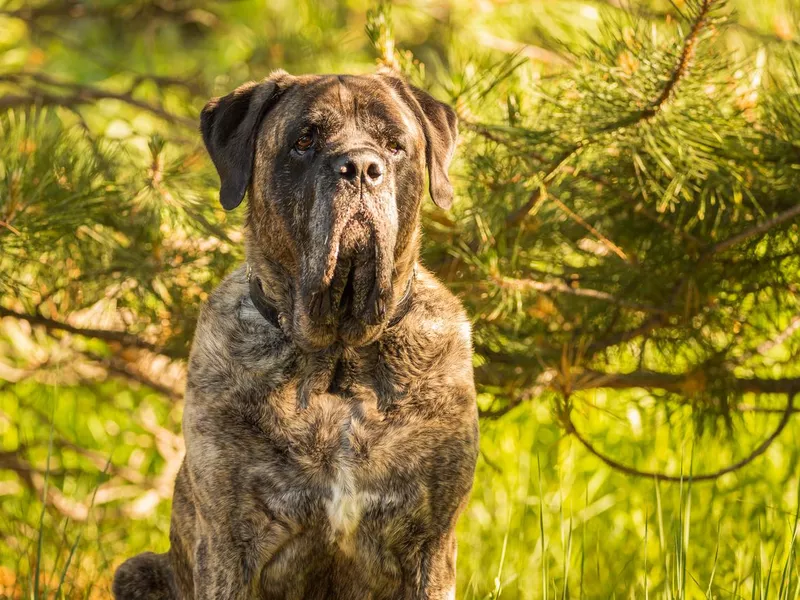
Getty Images
Most challenging trait: Wary of strangers, messy
Mastiffs are loyal and loving, which is what draws people to them, but their loyalty can come with a dark side. They’re protective of their families to the extent that they may not trust house guests if they’re not socialized well. They’re also extremely drooly and not everyone is a fan of slipping in puddles of dog slobber.
The biggest risk of owning a mastiff, however, is heartbreak. These gentle giants rarely live past the age of 10 and losing a beloved friend after such a short time is too much for some.
Spaniels

Getty Images
Most challenging trait: High prey drive
There are several types of spaniels, but all of them have intense hunting instincts. Anyone hoping to let their dog roam the yard will face a rude awakening when their spaniel goes mad chasing birds and neighborhood cats. Physical activity is mandatory and most spaniels have long coats that require a consistent grooming routine.
Spaniels are also velcro dogs that can become emotional and stressed when they’re left alone. Some spaniels bark non-stop until their owners return, even if they only ran out to run a few errands. Spaniels are a better choice for people who work from home since most neighbors aren’t a fan of being serenaded by a nervous spaniel all day.
Australian Cattle Dog
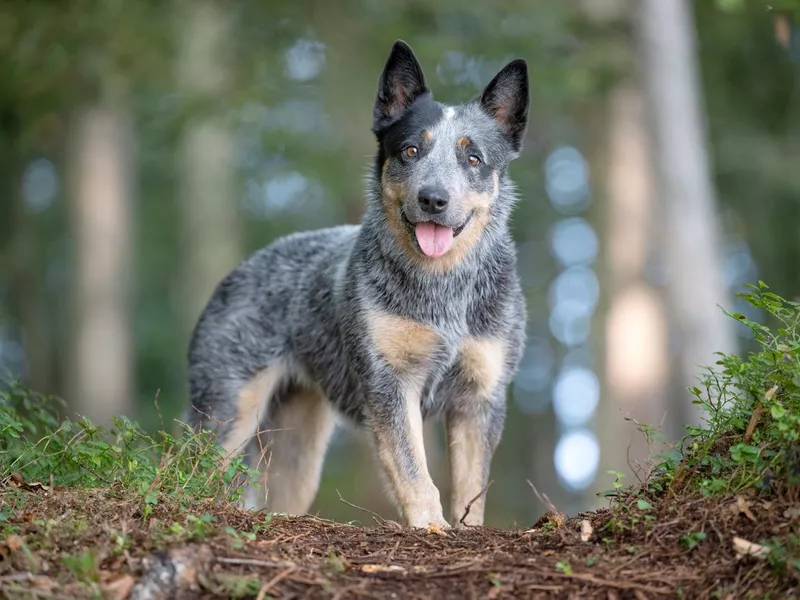
Getty Images
Most challenging trait: Workaholics
Australian cattle dogs take the cake for being the best and the worst at the same time. They were bred to keep livestock in check and they’re excellent at what they do. They’re superb problem solvers and have enough endurance to work all day long. In an average backyard, however, that’s not necessarily a good thing.
Australian cattle dogs go crazy if they’re understimulated and bored. They’ll quickly begin outsmarting their owners to find outlets for their energy. They can be so demanding that people decide they’re not cut out for their care and rehome them. Moral of this story: Before you get a dog of any breed, know what you’re getting yourself into.
For dog breeds that are easier to own, check out “Best Low-Maintenance Dog Breeds.”